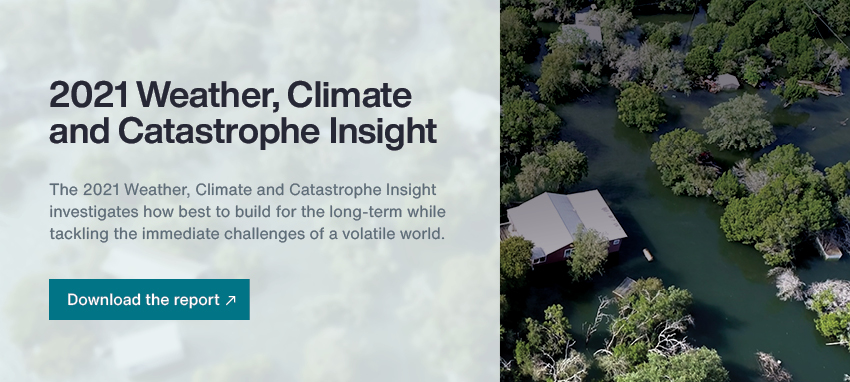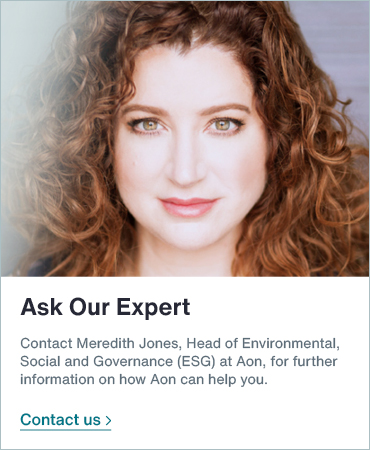On the morning of December 11, 2021 I awoke at 3:00 am to a series of alerts from the National Weather Service and the sound of Nashville’s tornado sirens wailing to life. I hurried downstairs and turned on the local weather coverage. Almost immediately, it became clear that we were facing an incredibly serious tornado threat.
In total, 24 tornadoes touched down in Tennessee during a 24-hour period on December 10-11. This more than doubled the state's preivous combined December total of 9 from 1950-2020. We were lucky, however, when you consider the death toll from Kentucky just to the north.

Following the latest tornado outbreak, a Kentucky candle factory is already facing a class-action lawsuit and an Indiana logistics facility made the international news as, in total, sadly 16 workers lost their lives. A class-action lawsuit is already in motion for one of the firms, while the other has received intense scrutiny over policies and workforce safety protocols as well.
Act today to prepare for tomorrow
These instances highlight just four of the myriad ESG risks (workforce safety, physical risks, liability, social license to operate) facing companies as climate change increasingly threatens people and our planet.
As firms evaluate their exposure to climate risks, in addition to broader ESG risks, they should assess and disclose the following:

- Access to capital: Funds directed to ESG investing reached $8 trillion in 2021 and could hit $30 trillion by 2030 . As investors look to manage long-term risk and volatility by factoring in material ESG issues, capital sources from banks to bonds to equity will be impacted. Companies who aren’t up to ESG standards could face reduced access to capital, or higher costs of capital
- Liability risk: The risk of litigation related to climate change cannot be understated. Legal exposure is increasing, and proceedings based on everything from mitigation and adaptation, greenwashing, disclosure, negligence, human rights, and administrative claims are on the rise, to name a few
- Regulatory risk: As governments look to avert a climate disaster and ensure long-term resilience, laws and policies that impact how a company operate will grow. According to the Principles for Responsible Investing (PRI), there were more than 159 new or revised ESG policies before September 2021, more than the entire calendar year prior
- Physical risk: The actual physical peril to property, employees, supply chains and distribution routes
- Access to insurance: As insurers navigate their own material ESG risks on both the asset and liability side, it will create a knock-on effect on what coverage is available and at what cost
- Social license to operate: A bit broader than just PR, social license to operate refers to the ongoing acceptance of business practices and operating procedures by a variety of stakeholders, including investors, employees and the general public
- Transition risk: Includes all the prior risks plus non-regulatory factors that impact a company’s ability to conduct business the world moves to a green economy. For example, companies may face increased costs of raw materials or have to make more investment in new technologies
- Governance: Catastrophic events like the December tornado outbreak highlight environmental and social risks, but governance remains critical in this discussion. It is virtually impossible to successfully manage environmental and social risks without strong and senior (think board level) oversight. Robust disclosure about ESG and climate change, which also stems from good governance practices, will also be required to help manage legal, regulatory and social license to operate relationships.
How else can I stay ahead of the game?
Frameworks such as the Task Force for Climate-Related Financial Disclosure (TCFD) are key when it comes to thinking through and disclosing exposure to the risks created by climate change. As companies, investors and insurers work through TCFD, they should consider:
- Governance – how does the firm oversee and report on climate change risk?
- Strategy – how does the firm structure their risk management strategy to mitigate the physical and operational/transitional impacts of climate change, while also identifying business opportunities created in the transition?
- Risk management – how does the firm assess and manage climate change risks?
- Metrics and targets – what methodologies and data are behind disclosed statistics and metrics, and how does the organization plan to manage into a new climate-resilient paradigm?
It is important to note that climate change is just one piece of a bigger ESG puzzle. Even with TCFD disclosure, companies should ensure they are taking all material ESG risks in hand by evaluating their business against evolving International Sustainability Standards Board (ISSB) criteria, as well as staying abreast of emerging regulatory requirements and investment and industry norms.
While these actions cannot prevent devastating natural disasters, they can minimize risks to business, people and planet and help create a more resilient world.

About the Author

Meredith Jones is a Partner and Global Head of Environmental, Social and Governance (ESG) at Aon. In this role, she works across Aon’s solution lines (Risk, Reinsurance, Health and Wealth) to develop and deliver ESG assessment, consulting and solutions.